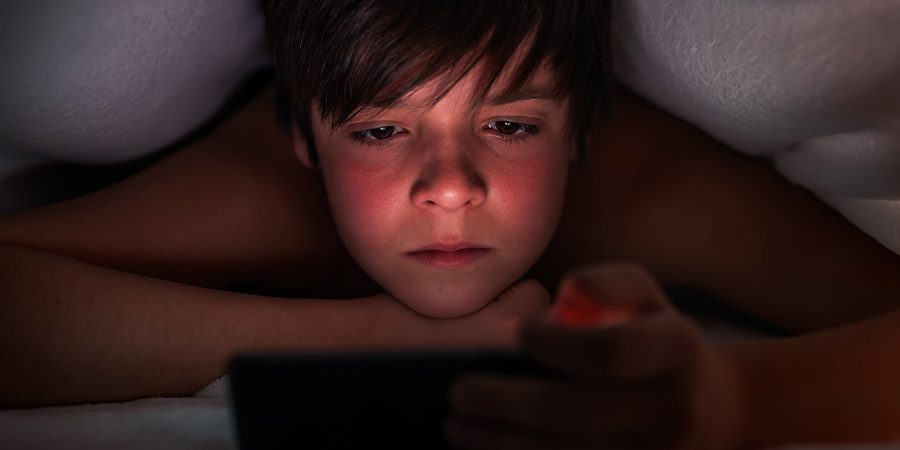In this article, we’ll look at the reasons behind the alarming trend of children as young as eight being affected by exposure to pornography, according to a report by England’s Children’s Commissioner.
We’ll also talk about how children’s behavior is affected by being exposed to technology and why tech companies, schools, and parents must work together to address it.
Key Takeaways:
- Pornography is having an impact on kids as young as eight years old.
- Most children first encounter pornographic content on social media platforms.
- The report calls for improved education in schools and better parental guidance.
- Tech companies should introduce decent age verification measures as part of the Online Safety Bill.
- The UK government’s Online Safety Bill aims to hold tech companies more accountable for user safety.
The Alarming Reality: Young Children Exposed to Pornography
A startling report by England’s Children’s Commissioner, Dame Rachel De Souza, has revealed a growing concern regarding the influence of pornography on children as young as eight years old.
The exposure to explicit content has been observed to negatively impact their behavior.
This distressing trend raises questions about the responsibility of social media platforms, educational institutions, and parents in preventing such exposure and mitigating its adverse effects on young minds.
The Role of Social Media Platforms in Exposing Children to Inappropriate Content
According to the findings of the report, a significant number of children first come across pornographic content on social media sites.
Platforms like Twitter and Snapchat have become primary sources for children to access explicit materials.
While both platforms maintain an age limit of 13 years, they continue to face criticism for not doing enough to prevent underage users from viewing inappropriate content.
Snapchat officials claim that their community guidelines prohibit the promotion or distribution of pornographic content and employ machine learning to detect and remove such material.
Twitter, on the other hand, has yet to comment on the issue.
Their guidelines do state that graphic content or adult nudity is not allowed within highly visible areas like live videos, profile images, and list banner photos.
Additionally, they restrict specific sensitive media, such as adult nudity and sexual behavior, for viewers who are under 18 or do not include their date of birth on their profile.
The Need for Better Education and Parental Guidance
The report by England’s Children’s Commissioner emphasizes the importance of improved education in schools and better parental guidance to establish appropriate boundaries for children.
Schools must incorporate comprehensive education programs to address the issue of exposure to explicit content and its harmful effects.
This education should be age-appropriate, taking into consideration the emotional and psychological development of the children.
Parents play a vital role in protecting their children from the harmful impact of pornography. Open communication, setting limits on internet usage, and actively monitoring their children’s online activities are essential steps towards safeguarding their well-being.
Tech Companies and the Online Safety Bill: A Call for Responsibility
Dame Rachel De Souza believes that tech companies should do more to protect young users from explicit content.
She advocates for the implementation of decent age verification measures as part of the Online Safety Bill.
The UK government has proposed the Online Safety Bill, allowing regulator Ofcom to block access or impose fines on companies that fail to take responsibility for user safety on their social media platforms.
The bill aims to hold tech companies accountable for the content they host and ensure a safer online environment for children.
Addressing the Problem: Collaboration Between Stakeholders
The issue of young children being exposed to pornography and its subsequent impact on their behavior requires a collective effort from all stakeholders involved in child safety online.
Michael Conroy, founder of Men at Work, a company that trains professionals working with boys and young men to have safer conversations with their peers, emphasizes the need for awareness and action.
He states that most teachers, social workers, and youth workers he has worked with have encountered children affected by pornography.
The first step towards addressing this problem is acknowledging the depth and scale of the issue.
It is crucial to create a comprehensive strategy that involves tech companies, educational institutions, parents, and the government working together to prevent exposure to explicit content at a young age.
By collaborating and sharing resources, these stakeholders can develop effective solutions to protect children from the harmful effects of pornography on their behavior and mental health.
This collaborative approach should focus on creating a safer online environment, providing better education, and offering support to both children and their families.
Conclusion
The alarming reality of young children being exposed to pornography calls for urgent action from all stakeholders involved in child safety online.
Tech companies, schools, and parents must take collective responsibility to protect children from the harmful effects of explicit content and its impact on their behavior and mental well-being.
By working together and implementing effective solutions, such as improved education, stricter content monitoring, and enhanced parental guidance, we can create a safer online environment for children.
It is essential for all parties to recognize the severity of this issue and commit to taking the necessary steps to ensure the protection of our children’s innocence, health, and future.
 Sections of this topic
Sections of this topic
















